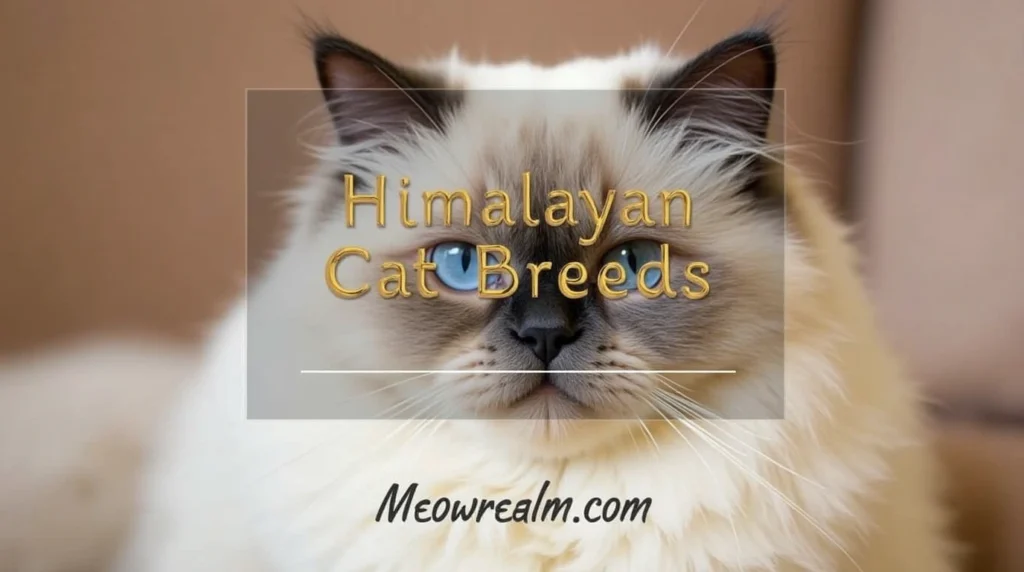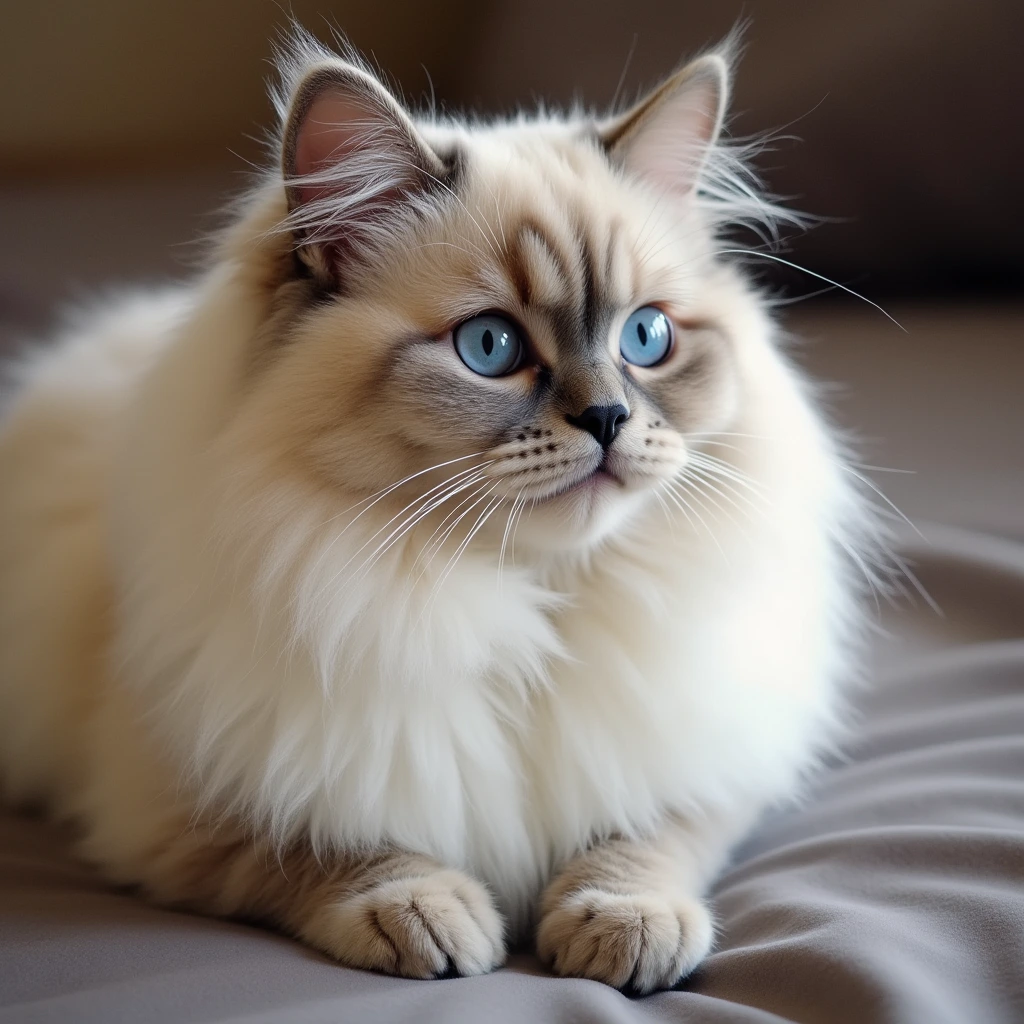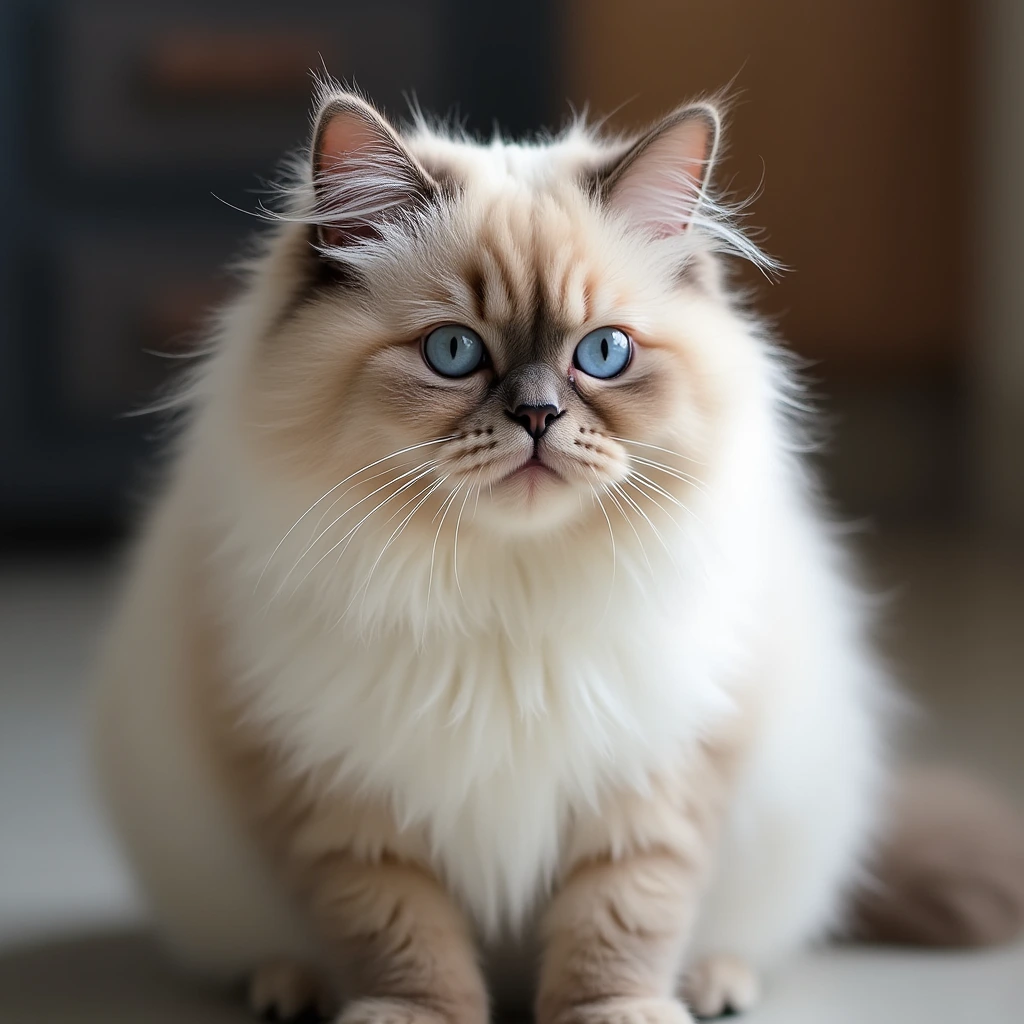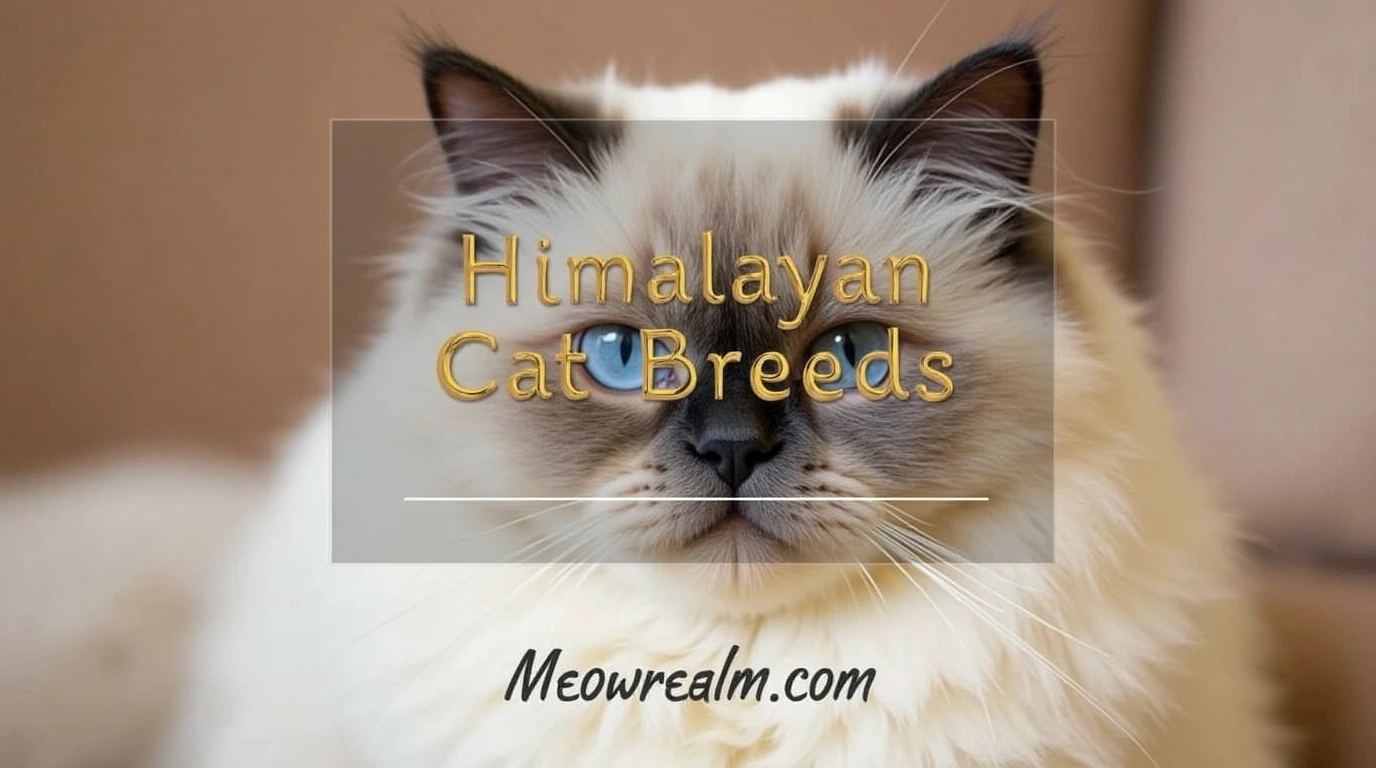With their stunning blue eyes, luxurious coats, and affectionate personalities, Himalayan cat breeds have captivated cat lovers for decades. If you’ve ever had the pleasure of owning a Himalayan cat, you know they are more than just their beauty—they bring warmth, companionship, and joy to your home.
But what makes these felines so special? In this article, you’ll uncover 10 fascinating facts about Himalayan cat breeds—from their unique origins to their grooming needs, personality traits, and more. Whether you’re a current owner or considering bringing one into your home, this guide will provide all the essential insights you need to know.
Table of Contents

1. The Himalayan Cat Breed Is a Cross Between Two Popular Breeds
Himalayan cats are not a naturally occurring breed. They were intentionally bred to combine the best qualities of two popular breeds: the Persian and the Siamese. The goal was to create a cat with the Persian’s long, luxurious coat and the Siamese’s striking color points and blue eyes.
Origins of the Himalayan Cat
- In the 1930s, breeders in the United States and Britain began experimenting with Persian and Siamese crosses.
- The breed was officially recognized in the 1950s by major cat registries.
- Today, they are considered a distinct breed, although some cat associations classify them as a Persian variant.
2. Himalayan Cats Come in a Variety of Colors
While all Himalayan cats share the same color-pointed pattern, their fur can come in different shades, making each one unique. Recognized color variations include:
- Seal Point (dark brown points, cream body)
- Blue Point (grayish-blue points, pale body)
- Chocolate Point (rich brown points, ivory body)
- Lilac Point (light lavender-gray points, white body)
- Red Point (reddish-orange points, white body)
- Cream Point (light beige points, off-white body)
Each color variation adds to the distinctiveness of these stunning cats, making them one of the most visually appealing breeds in the feline world.
3. They Have Striking Blue Eyes
One of the most enchanting features of Himalayan cats is their deep blue eyes. This trait comes from their Siamese ancestry, which carries a recessive gene responsible for their mesmerizing eye color.

Why Do Himalayan Cats Have Blue Eyes?
- Their eye color results from a genetic mutation linked to the temperature-sensitive albinism found in Siamese cats.
- The cooler areas of their body (ears, face, paws, and tail) develop darker pigmentation, while their eyes remain brilliantly blue.
4. Himalayan Cats Have a Distinct Personality
If you’re looking for a gentle, affectionate, and loving companion, the Himalayan cat might be the perfect fit. Their personality blends the best traits of both Persians and Siamese.
Himalayan Cat Personality Traits
- Calm and gentle – They love lounging and being pampered.
- Affectionate – They form strong bonds with their owners.
- Playful but not overly active – They enjoy toys but are not hyperactive.
- Social but independent – They like attention but also appreciate their alone time.
5. They Require Regular Grooming
Himalayan cats have thick, luxurious fur that requires consistent maintenance. Without proper grooming, their coats can become matted and tangled, leading to discomfort and potential skin issues.
Grooming Tips for Himalayan Cats
- Daily brushing to prevent tangles and mats.
- Regular bathing (every few weeks) to keep their coats clean.
- Eye cleaning to prevent tear staining, which is common in the breed.
6. Himalayan Cats Can Be Prone to Health Issues
Like many purebred cats, Himalayans are prone to certain health problems due to their genetic background.
Common Health Issues
- Respiratory problems – Due to their flat-faced (brachycephalic) structure, they may have breathing difficulties.
- Polycystic kidney disease (PKD) – A genetic disorder inherited from Persians.
- Excessive tear production – Can lead to eye infections if not managed properly.
Regular veterinary check-ups and a healthy diet can help keep these health concerns under control.
7. They Are Indoor Cats
Himalayan cats thrive in indoor environments and are not suited for outdoor living due to their thick fur and delicate respiratory systems.
Why Keep Himalayan Cats Indoors?
- Protects them from extreme temperatures.
- Prevents respiratory issues from outdoor pollutants.
- Keeps their coat clean and tangle-free.
8. Himalayan Cats Have a Unique Vocalization
Unlike Siamese cats, which are known for their loud, demanding meows, Himalayans have a softer, more melodious voice.
Vocalization Traits
- Gentle, soft-spoken meows.
- More communicative than Persians but less demanding than Siamese.
- Use their voice to express affection and request attention.
9. They Are Highly Intelligent
Himalayan cats are intelligent and trainable, making them easy to teach tricks and commands.
Intelligence Highlights
- They can learn tricks like fetching and responding to commands.
- Enjoy interactive toys and puzzle feeders.
- Can be leash-trained for supervised outdoor walks.
10. Himalayan Cats Are Popular Show Cats
Due to their elegant looks and well-defined breed standards, Himalayan cats are one of the most popular show cats.
Recognition by Major Cat Associations
- Cat Fanciers’ Association (CFA)
- The International Cat Association (TICA)
- American Cat Fanciers Association (ACFA)
Pros and Cons of Himalayan Cat Breeds

Pros himalayan cat breeds
✅ Stunning appearance
✅ Gentle and affectionate
✅ Low-energy, perfect for apartments
✅ Intelligent and trainable
Cons himalayan cat breeds
❌ Requires high-maintenance grooming
❌ Prone to respiratory and kidney issues
❌ Can be sensitive to heat and cold
Frequently Asked Questions About Himalayan Cat Breeds
Are Himalayan cats hypoallergenic?
No, they produce dander and shed, which may trigger allergies.
How long do Himalayan cats live?
They typically live 12-15 years, with proper care extending their lifespan.
Do Himalayan cats get along with other pets?
Yes, they are generally friendly and adaptable, but introductions should be gradual.
How much do Himalayan cat breeds cost?
Prices range from $500 to $2,500, depending on breeder reputation and lineage.
Conclusion
Himalayan cat breeds are among the most beautiful, affectionate, and charming companions you can have. While they require a bit more grooming and health care than other breeds, their loving personalities make them well worth the effort.

